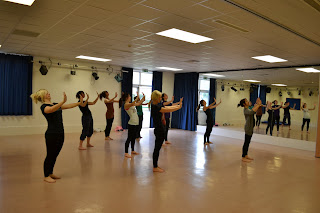When researching films, I tried to think of films which I felt made me think not only about the film storyline itself, but the process of creating and filming.
With films like Avatar which took years after technology improving with filming & editing, the standards are so high and the skills and ideas that were put into a film like this is incredible.
I research into Avatar and these are the words that best describe the film's storyline: tribe, rescue, battle, forbidden love, destruction, survival and heroine.
Below are images from the films trailer, two which show certain aspects of the film.
Technology has dramatically improved in order to create such a masterpiece. The link between human and animated characters is faultless and very lifelike. It creates a next level in film and photography. I feel this film has shown a new peak of technology and from this, films can continue to be even better and shown even a new level for centuries to come.
The overall storyline is very clever and engaging. The plot is spiritually moving, visually daring and emotionally stirring. It's a classic story telling at its best.
I feel with the special effects being at it's best made the film so breathtaking, when watching it myself I felt taken back by the effects which are now possible and with the storyline being so carefully created and captivating.
Memoirs of a Geisha was the second film I watched and researched. I really felt this film captured the life of a geisha and the time very effectively. The words that describe the film the best are: historical, villainous, cultural, war, love, jealousy and betrayal.
Below are images of the trailer; two sections of the film of which I thought captured the essence of that time.
I feel its very realistic in the set and costume, everything is detailed like it would be during that time. The positioning of the camera during certain scenes highlights what the story is truly telling and puts emphasise on the most important and engaging scenes. During the film there are certain scenes which do 'put you on the edge of your seat' and I feel the camera positioning and set/costume etc adds to this effect, as well as the storyline being portrayed so effectively.
The film is very historical and tells a powerful true story. The actresses trained for a long period of time in order to look perfect when portraying a Geisha.The storyline is thought through carefully to engage the audience throughout and they have filmed sections and studied different characteristics thoroughly so it's believable and breathtaking.












 "We poured a mixture of sugar and flour down a tube over Sham's head while he jumped. I wanted him to look as though he himself was being poured and has coalesced into that shape."
"We poured a mixture of sugar and flour down a tube over Sham's head while he jumped. I wanted him to look as though he himself was being poured and has coalesced into that shape." "I want impossible looking situatons that allude to the moments before and after the shutter's click. I want to viewer to wonder, where is he coming from? How will he land?"
"I want impossible looking situatons that allude to the moments before and after the shutter's click. I want to viewer to wonder, where is he coming from? How will he land?"








